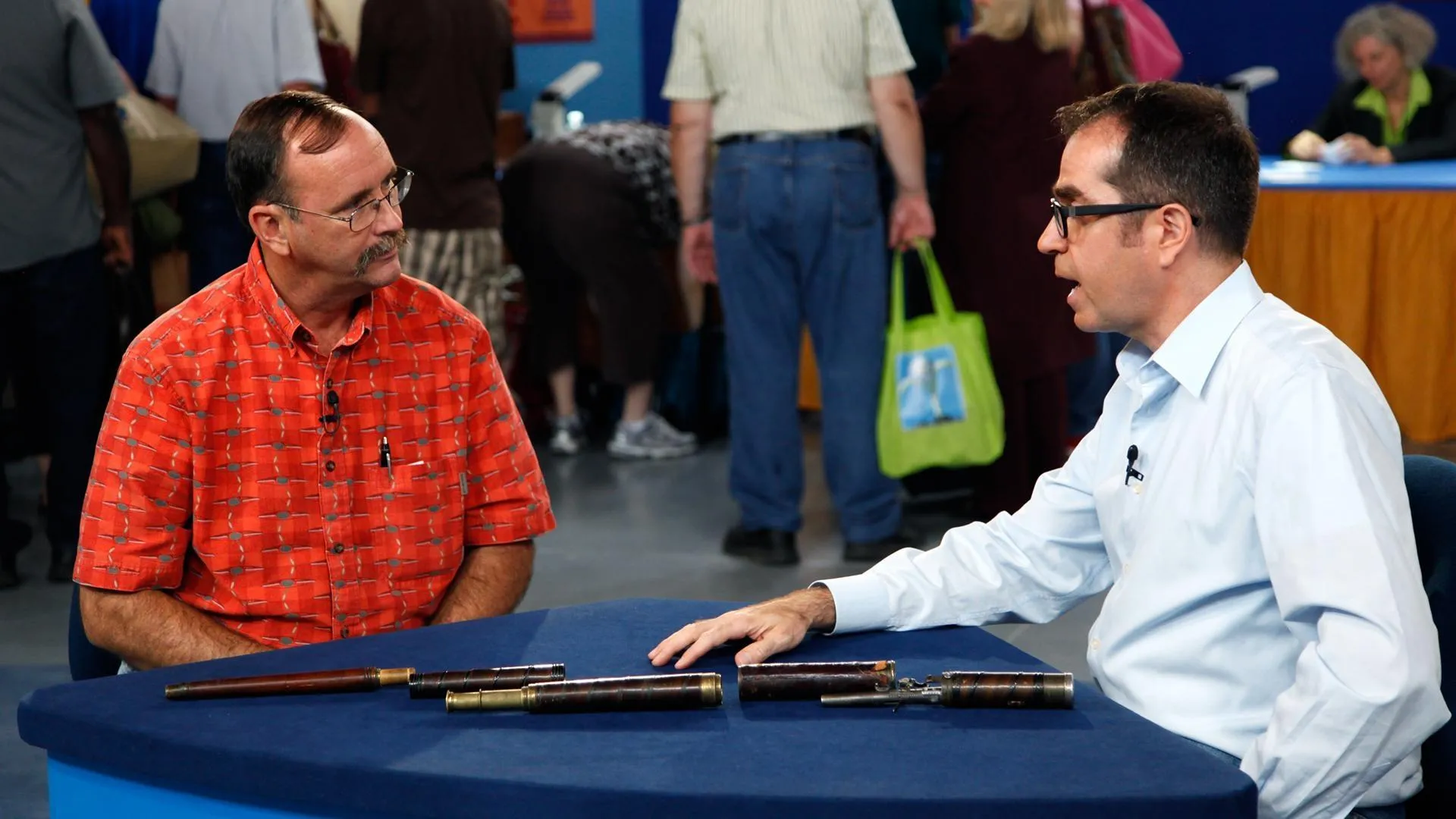GUEST: My dad got it in India. He was in World War II in India, on the India-Chinese border, and he brought it back with him after the war, so it's always been at our house. Matter of fact, it sat there by the fireplace. We had a dairy farm, and Dad would come in and hang his hat on it after work. (laughs)
APPRAISER: Do you know anything more about how it was discovered? It's unusual to find something like this on the Indian border.
GUEST: Of course, you hear stories, but I don't know exactly. But he said it was sitting on a big turtle. And his buddy in the army, he had the turtle, but he died and we lost track of where the turtle was. I did take it to a museum in Kansas City once-- there's supposed to be a Chinese expert up there-- and he said he didn't really know what it is, but he checked around and he said he thought it might be from the 12th century and it might be a feudal lord's urn, because under this... right here under this arm, you'll feel this little hole, there. It had ashes in it, human ashes.
APPRAISER: Hmm... Very interesting story.
GUEST: But that's, you know, that's what he said. I don't know.
APPRAISER: It's very difficult to say that it actually contained human ashes. It may have once contained scrolls or prayers.
GUEST: Yeah.
APPRAISER: The museum specialist was perhaps a couple of centuries before, at least, what I think it is. I think it's 16th, 17th century Chinese. And it's very interesting that you've said that it was found with a tortoise.
GUEST: Yeah.
APPRAISER: The tortoise, probably the vehicle, sat right here under his foot, and it's actually the Chinese protectorate god of the north, which was seated on a black tortoise. There are four deities of the four Chinese directions-- north, south, east, and west-- and this is actually the protectorate deity of the north. This is Ming military garb, the same kind of garments that a Buddhist guardian figure would wear. There are also traces of gilding along the breastplate area, and so the statue was once gilded. Do you have any idea of value?
GUEST: No, I have no idea.
APPRAISER: Even without the tortoise vehicle, you're looking at a piece that could bring as much as $70,000 to $100,000 at auction.
GUEST: Oh, man. My two brothers will be really tickled. (laughs)
APPRAISER: It's a classic example of Ming bronze sculpture. If it was complete, it would be somewhere in the vicinity of $200,000 to $300,000.
GUEST: Well maybe whoever's got the turtle will call me. (laughs)



